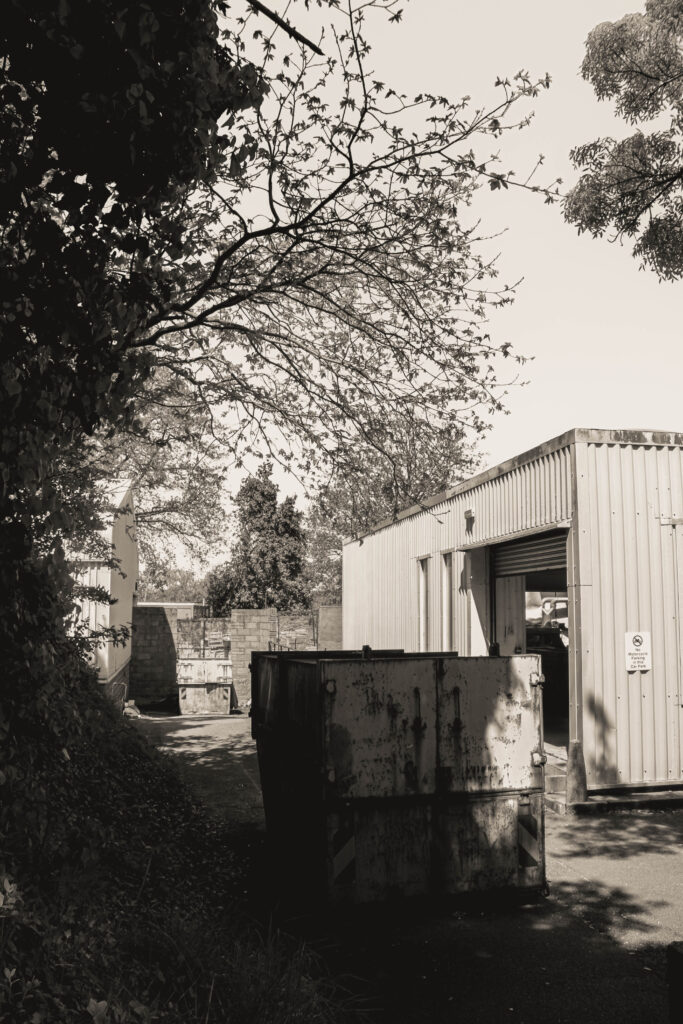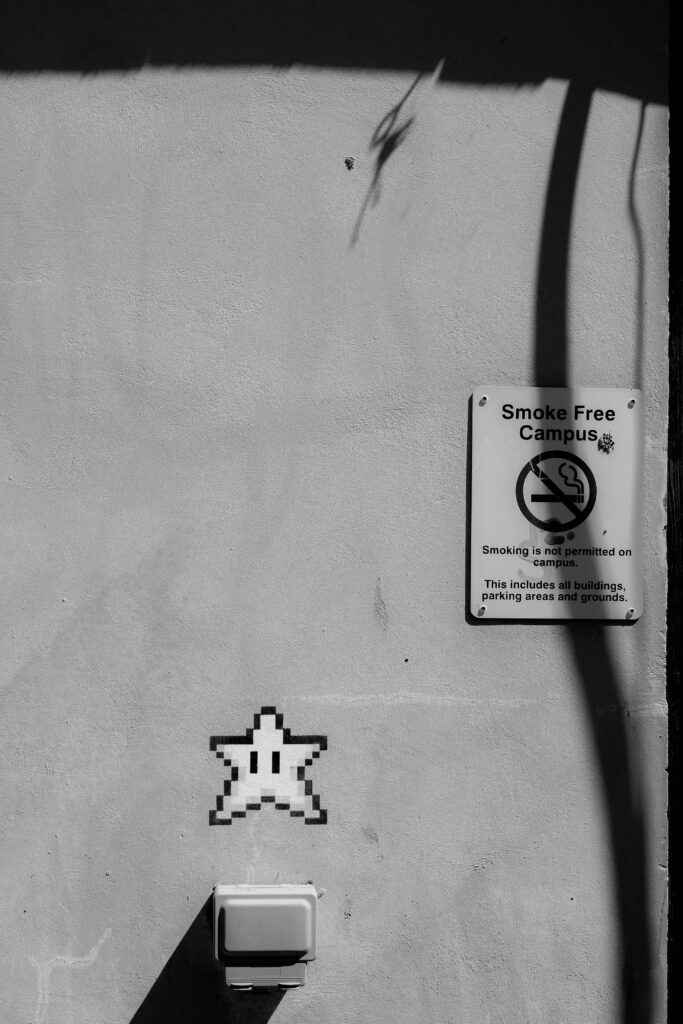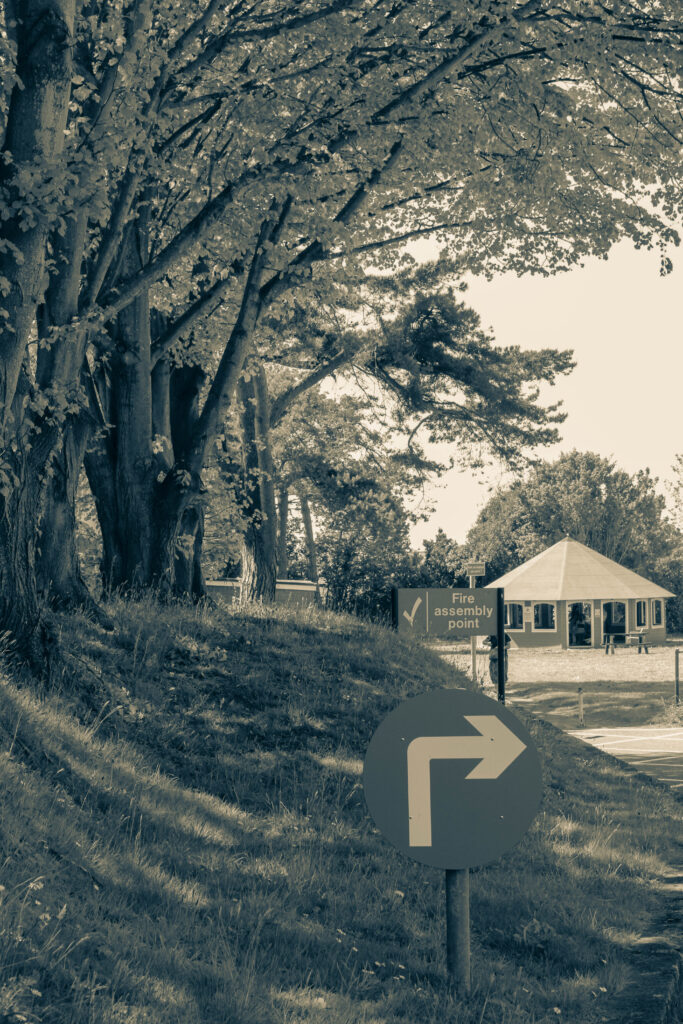What is Meant by a topographic?
Relating to the arrangement of the physical features of an area. “a topographic map of the site” Anything topographic has to do with the surface of the earth, including every valley and hill. A topographic map includes lines that show the elevation of the land.
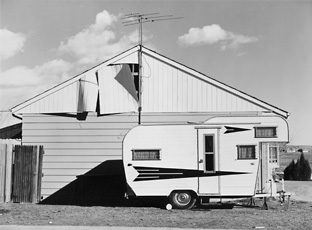
What is meant by the term New topographics in relation to photography during the industrial revolution?
“New topographics ” was a term created by William Jenkins ( An Art Critic.) in 1975 to describe a group of American photographers (such as Robert Adams and Lewis Baltz) , New topographics can be seen as another way to describe landscapes: how they are structured visually/physically and composed. For this era of photography it was used as a label to generalise a style of photography which included pictures that had a similar banal ( lacking originality, freshness) aesthetic, in that they were formal, mostly monochrome ( black and white) prints of the urban landscape.
Photographers associated with the New topographics.
Overall, Most The Photographers Associated with new topographics including Robert Adams, Lewis Baltz, Nicholas Nixon, Joe Deal, Frank Gohlke, Bernd and Hilla Becher, and Stephen Shorer, Where clearly inspired by the man made , selecting subject matter , that was matter-of-fact. This included urban structures like parking lots, suburban housing and warehouses were all depicted with a unique stark austerity ( sternness or severity of manner or attitude) , Almost in the way early photographers documented the natural landscape.
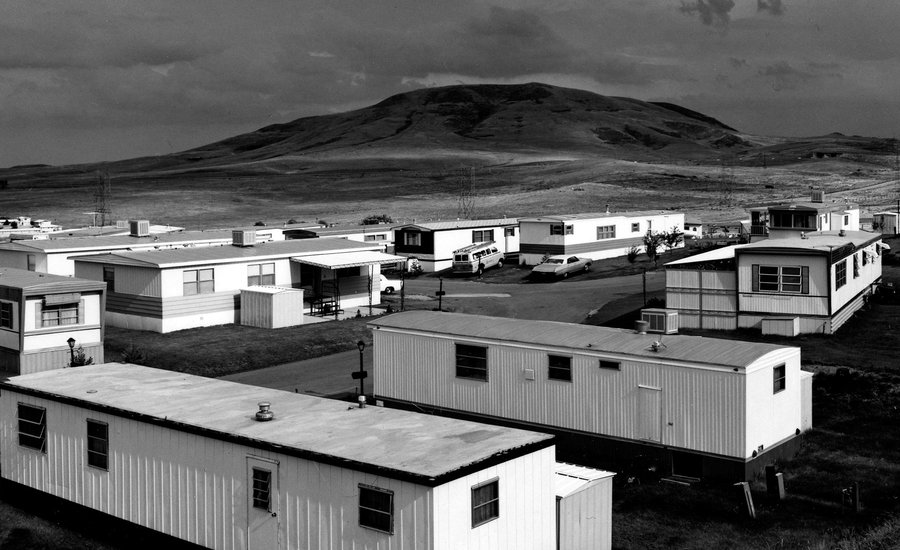
An exhibition at the international museum of photography located in Rochester, New York featuring these photographers also revealing a story of a growing unease about how the natural landscapes where being eroded by industrial development.
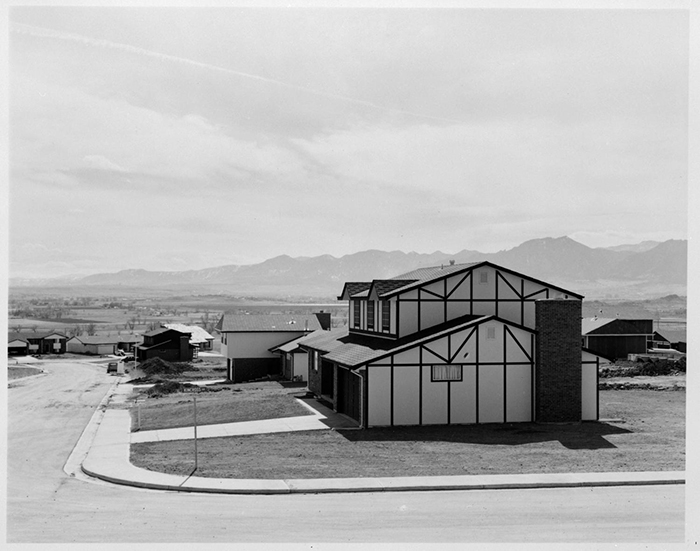
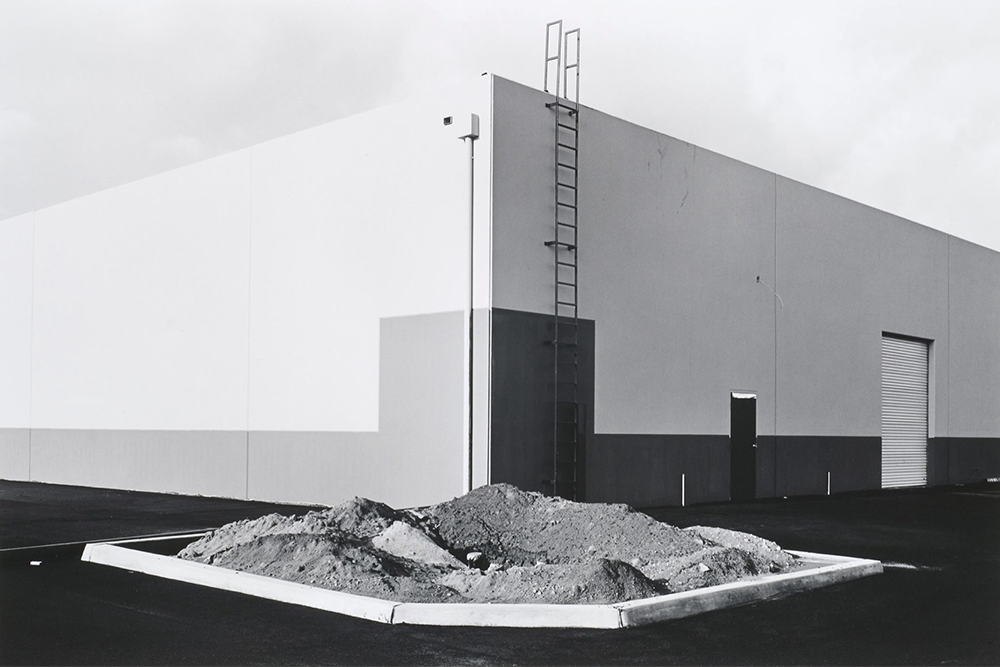
The new topographics also had a decisive influence on later photographer including those artists who became known as the Düsseldorf school of photography.

June 21, 1975
What Was the New Topographics a Reaction To?
The New Topographics was a response to the romanticized and dramatic landscape photography that dominated earlier styles, particularly in the works of Ansel Adams and the American West tradition.
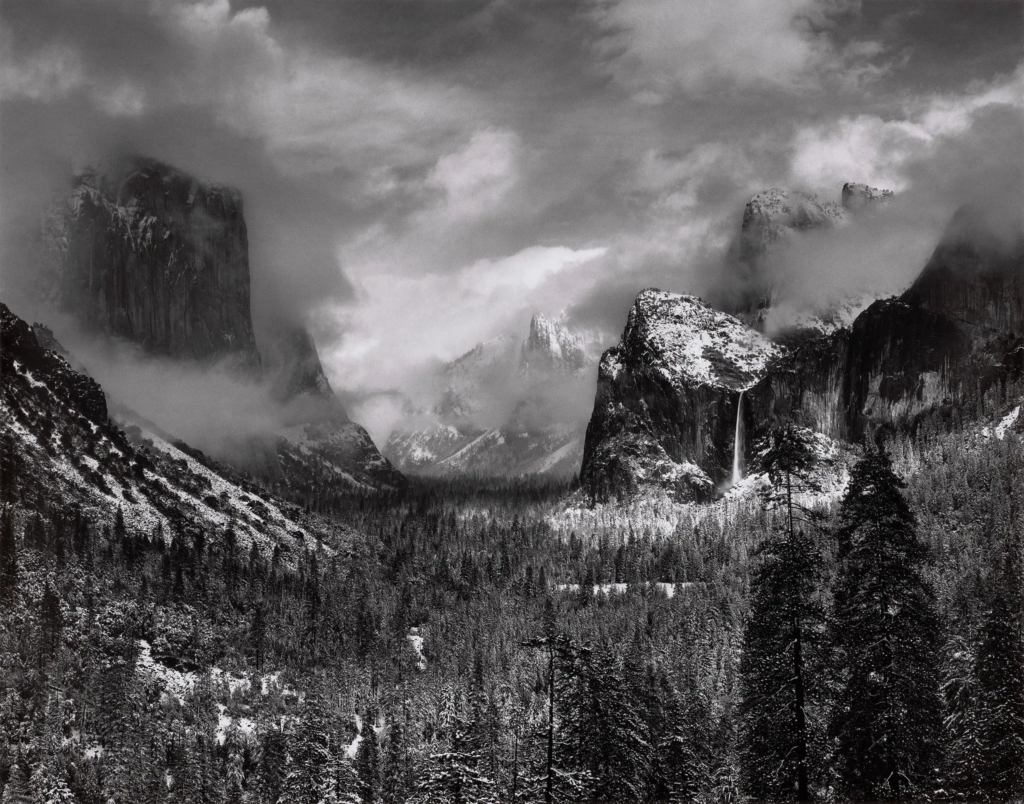

This movement emerged in reaction to the rapid industrialization and suburban expansion of the 20th century, shifting the focus from untouched nature to human-altered landscapes. Instead of capturing spacious wilderness, these photographers documented the everyday, man-made environment, portraying the stark reality of urban society, industrial sites, and suburban developments.
Characteristics of the New topographics style Photography.
Robert Adams, Lewis Baltz, Nicholas Nixon, Joe Deal, Frank Gohlke, Bernd and Hilla Becher, and Stephen Shore ; shared a common aesthetic:
Banal Subject Matter: They depicted ordinary, functional landscapes such as suburban housing developments, highways, warehouses, and industrial zones.
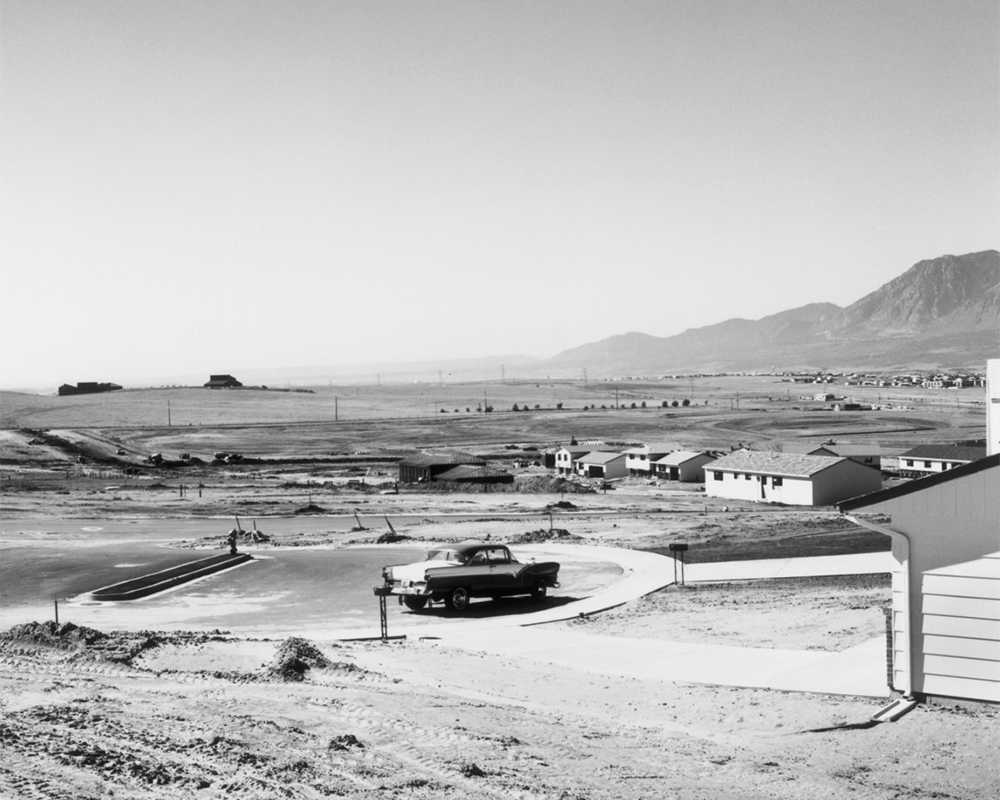
Matter-of-Fact Presentation: Their images were often formal, detached, and devoid of overt emotional or political statements.
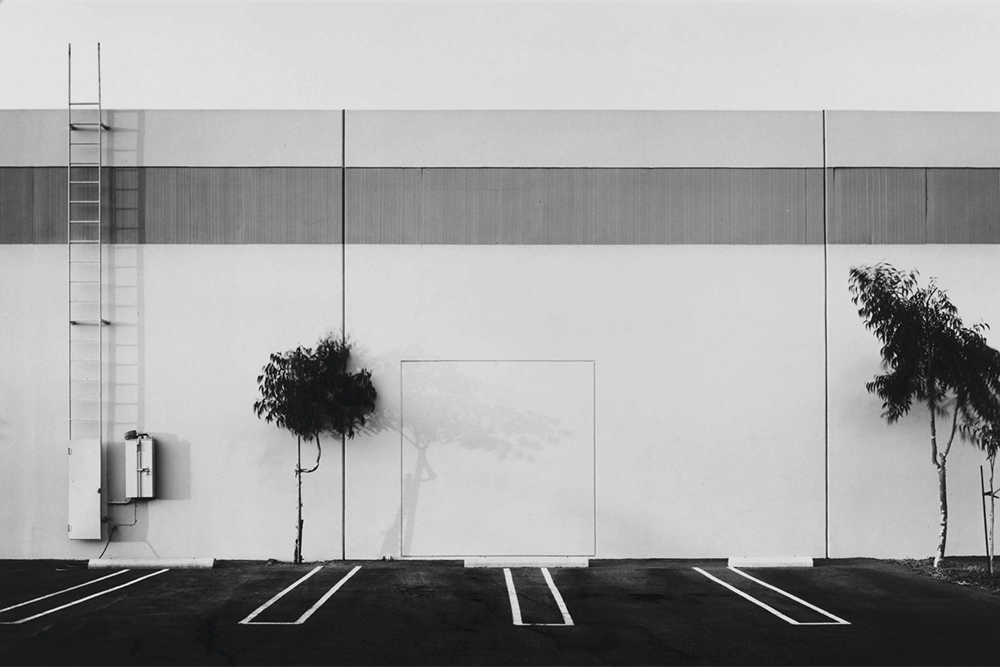
Monochrome & Colour Photography: Many photographers used black-and-white photography, reinforcing a documentary-like objectivity, while others, like Stephen Shore, explored the potential of colour.
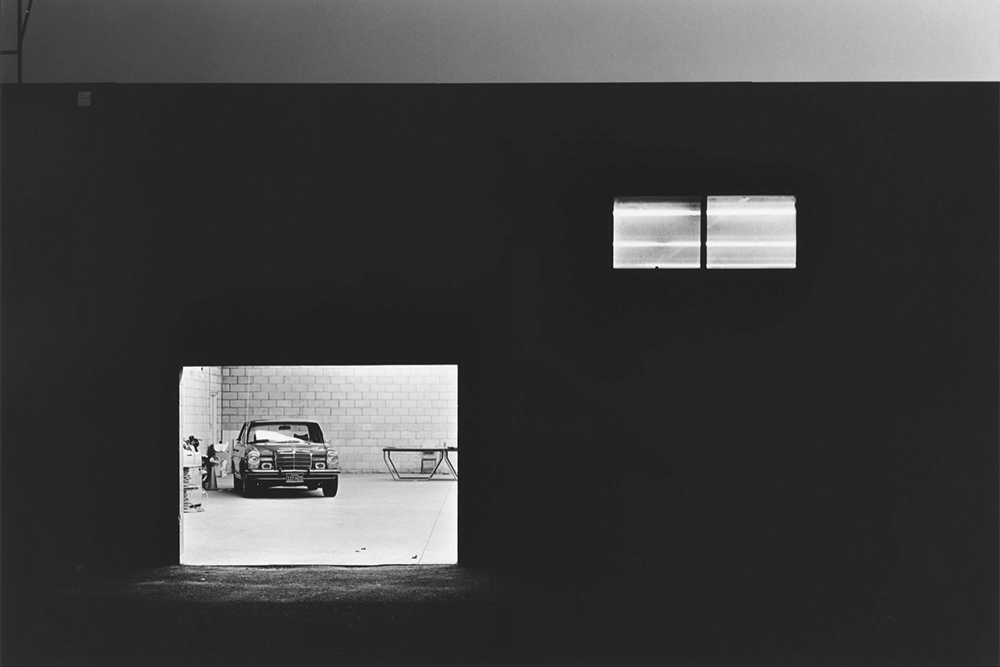
Stark Composition : The compositions were often simple, symmetrical, and methodically structured, emphasizing repetition and geometry.
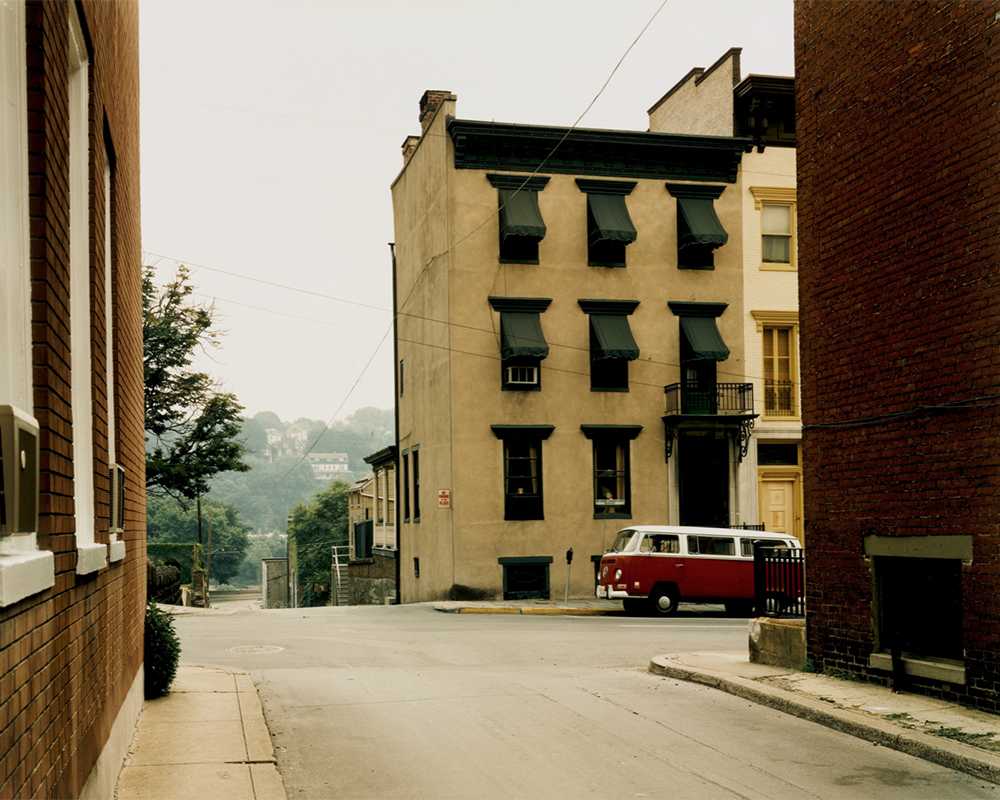
Stephen Shore, Church and 2nd Streets Easton Pennsylvania, 1974
Minimalist Aesthetic: The photographs had a clinical, neutral tone, rejecting romantic standards set by the romanticism era.
The Influence of New Topographics
The movement significantly influenced later photographers, particularly those of the Düsseldorf School, including Andreas Gursky and Thomas Struth. Their approach to large-scale, detailed images of contemporary urban life echoes the conceptual and aesthetic principles established by the New Topographics.

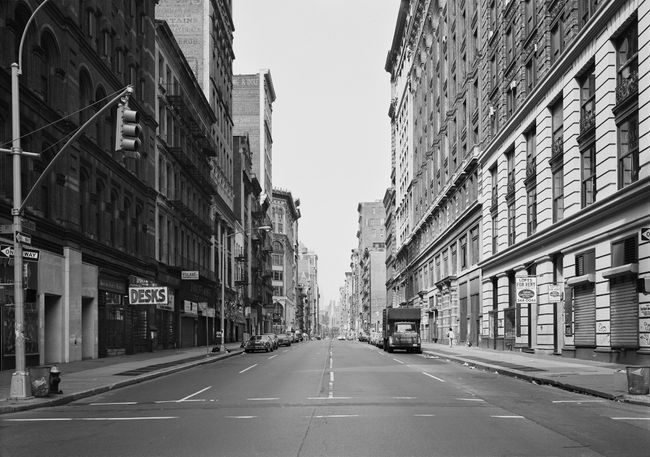
Broadway at Prince Street, New York 1978
CASE STUDY: Stephen Shore, Beverly Boulevard and La Brea Avenue, Los Angeles, California, June 21, 1975, chromogenic colour print
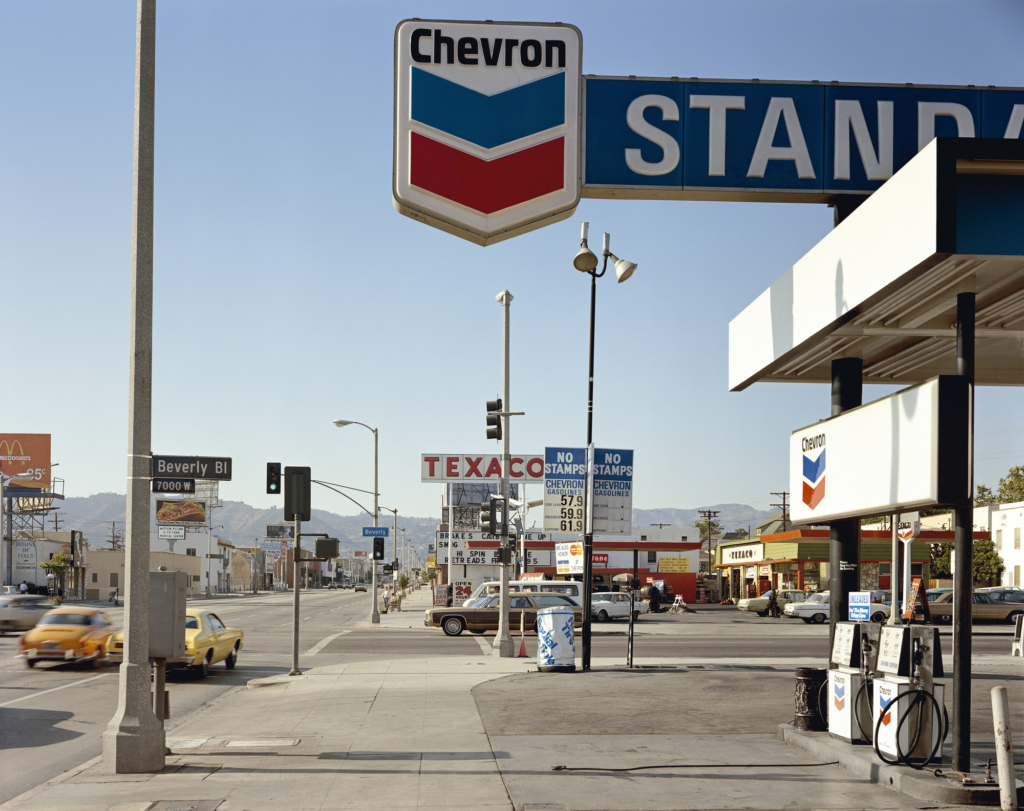
Technical Analysis
Lighting: The image is illuminated by natural daylight, casting strong shadows and enhancing contrast. The even lighting ensures all elements remain visible and well-defined. The bright, clear sky provides a solid backdrop for the man-made structures in the foreground.
Aperture: The deep depth of field keeps every element sharp, from the Chevron sign in the foreground to the mountains in the distance.
Shutter Speed: The presence of motion blur in the orange and yellow cars in the foreground suggests a slightly slower shutter speed, emphasizing movement in contrast to the stillness of the signage and architecture.
ISO: The fine grain and sharp detail indicate a low ISO, maintaining clarity in both bright and shadow areas.
White Balance: The cool blue sky contrasts with the warmer tones of the signage and pavement, reinforcing the separation between natural and man-made elements.
Visual Analysis
The foreground is heavily cluttered with signs, traffic lights, and fuel station, while the background is an open, expansive sky with distant mountains. This juxtaposition emphasizes how even though urbanization occurred , natural landscapes are always in part present and not forever lost, however very much dominated and overwhelmed by the man-made structures
Colour:
The dominant red, white, and blue in the Chevron sign echo American nationalism, reinforcing the idea that corporate branding is deeply embedded in American identity.
Tone:
The photograph balances light and dark tones, using contrast to define structures. The solid blue sky acts as negative space, making the signs stand out prominently.
Texture:
The smooth, reflective surfaces of signs and vehicles contrast with the rough pavement
Shape & Form:
The strong geometric composition features rectangles, vertical lines, and directional signage, creating leading lines which help your eyes through the image.
Pattern & Repetition:
The repetition of corporate signage (Chevron, Texaco) and road signs emphasizes the omnipresence of consumer culture.
Line & Space:
The road acts as a leading line, guiding the viewer’s eye toward the mountains.
The Chevron sign’s arrows direct the gaze further into the scene
The low horizon line places emphasis on the sky while anchoring the cluttered urban environment below.
Contextual Analysis
Historical Context:
The low fuel prices indicate a time when gasoline was significantly cheaper, reflecting an era of car dependency.
The 1970s American Dream was heavily associated with freedom, travel, and consumerism, all fuelled by the oil industry.
Personal Context
Stephen Shore, a key figure in the New Topographics movement, deliberately photographed mundane, everyday American scenes to challenge traditional ideas of beauty in photography.
Cultural/Social/Political Contexts:
The signage pollution symbolizes corporate intrusion into public spaces.
The American car culture and oil industry are central themes fuel companies profited from the nation’s reliance on cars , influencing infrastructure and lifestyle choices.
Wider Connections:
The tension between national pride (symbolized by American colors) and corporate dominance raises questions about whether commercialism has overtaken cultural identity.
Conceptual Analysis
The Chevron sign is a dominant signifier, larger and more prominent than any natural elements in the frame, symbolizing corporate power.
The use of red, white, and blue in the Chevron sign mirrors the American flag, blending corporate branding with national identity.
The large-format camera allows for a vast depth of field, ensuring every detail is crisp and visible. This enhances the documentary nature of the image, making the viewer engage with all elements rather than focusing on a singular subject.
NEW TOPOGRAPHICS PHOTOSHOOT
HIGHLANDS


